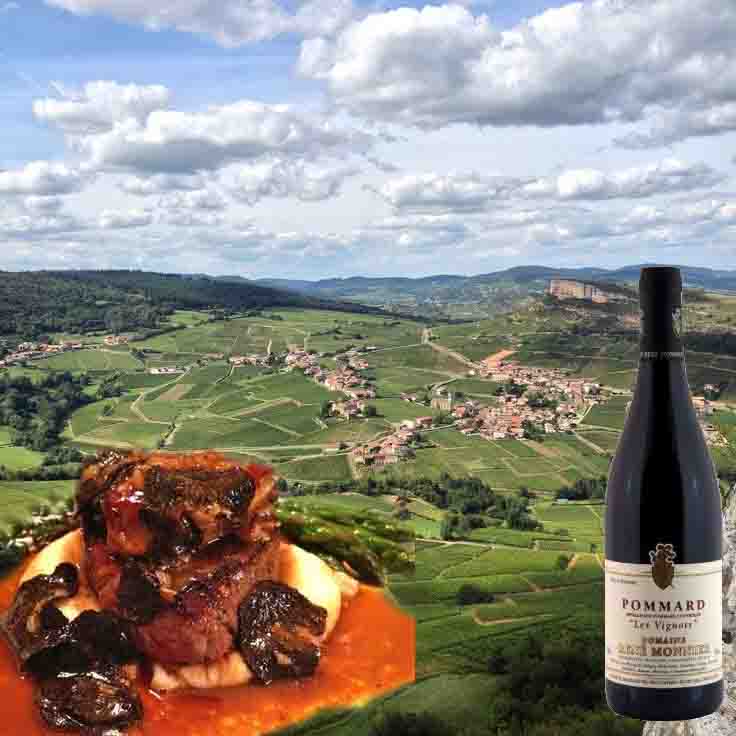6 August 2015
Across the Rhine
By Chin Chin
 Turn your car west in the fastnesses of the Black forest, cross the Rhine just north of Basel and drive through Alsace into the lush countryside of Burgundy. Physically it is only a drive of a couple of hundred miles but culturally the two ends of the trip are worlds apart. Some of the changes are immediately obvious. Although heavily wooded, the French countryside has a wider variety of trees and the forests are no longer dominated by the ubiquitous south German firs. Then the French towns are quite different from the German with a yellowish stone taking the place of wood and, in the principal buildings, sparer designs taking the place of the baroque. That isn’t always an improvement of course; even to the austere northern eye the baroque when done well can be supremely effective and a visit to Ludwig II’s castle at Linderhof provides a lesson in how the hand of a master can transform a riot of opulence into a staggeringly beautiful whole.
Turn your car west in the fastnesses of the Black forest, cross the Rhine just north of Basel and drive through Alsace into the lush countryside of Burgundy. Physically it is only a drive of a couple of hundred miles but culturally the two ends of the trip are worlds apart. Some of the changes are immediately obvious. Although heavily wooded, the French countryside has a wider variety of trees and the forests are no longer dominated by the ubiquitous south German firs. Then the French towns are quite different from the German with a yellowish stone taking the place of wood and, in the principal buildings, sparer designs taking the place of the baroque. That isn’t always an improvement of course; even to the austere northern eye the baroque when done well can be supremely effective and a visit to Ludwig II’s castle at Linderhof provides a lesson in how the hand of a master can transform a riot of opulence into a staggeringly beautiful whole.
Quite apart from appearances, there are more subtle changes too. A few days stay at German hotels accustoms the British traveller to being mistaken for a local. “Guten Morgen” say the staff as the Englishman arrives for his breakfast, and presumably much the same is said to the Scots, the Welsh and the Irish. Then, when you stop the ensuing stream of jabber with the words “I am English,” they switch languages in a manner which is a credit to the German educational system. In France it is quite different. You are spotted as “un Anglais” from the start and greeting you in French is merely politeness, as is the remark “Monsieur speaks our language so well” – a line best delivered with a smile by an attractive member of the opposite sex.
The contrast may seem odd to those whose German is limited to “please “ and “thank you” but whose French, if of the schoolboy variety, is at least better than that of a friend of mine who, having broken a glass, confessed to the waitress, “J’ai cassé une verre,” to find that he had inadvertently ordered coffee for two. The truth is, of course, that appearing local is not so much about whether you can speak the language as about body language and deportment. A good tout at a foreign monument can spot the race of a tourist long before he or she opens their mouth. It is simply that in the way in which we dress, move and use our hands we are far more like the Germans than like the French.
The other great differentiator is food. German food, of course, can be excellent – particularly if you like veal and sauerkraut. However it can hardly stand with that of Burgundy whose cuisine compares favourably with any on the planet. Escargot, boeuf bourguignon, époisses, the terms trip off the tongue as easily as the battle honours of the Hundred years War and the wines are easily their match. The trick is to get the right balance between the two.
It was with this in mind that a few days ago I ordered escargot in a rich soup to be followed by Fillet Rossini and a plate of creamy cheeses. Too rich, you might think, particularly if you remember that Fillet Rossini is topped off with a slab of foie gras. Yes, that is what I thought for a moment but then my mind went back to Lindenhof and how by striking the right balances Ludwig’s architects had combined the richest materials to make an elegant whole. Cut the rich Burgundian food with a few glasses of a fresh, fairly recent, pinot noir and all should be well, a refreshing repast in fact. Still in carrying out this type of balancing it is important to be on the cautious side. Perhaps a full bottle of Pommard would be safer then and, to make assurance doubly sure, a little of the local brandy.
Yes, that really must have offset the richness. I went to bed thinking about the importance of balance in nature and the clever way in which I had exploited it. An hour or two later I awoke feeling sick. It seems I had got it wrong after all. It should have been two bottles of burgundy and not one.

